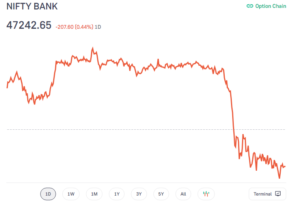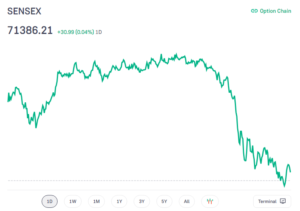
International Day of Families 2022 observed on 15th May
International Day of Families 2022
The International Day of Families is observed every year on 15 May to reflect the importance that the international community attaches to families. The significance of families is highlighted on this day. The United Nations works on topics that are critical to the well-being of families worldwide, such as health, education, children’s rights, gender equality, work-family balance, and social inclusion, among others.
The theme of the International Day of Families 2022:
The theme for this year ‘Families and Urbanization’ aims to raise awareness about the necessity of family-friendly urban policy. One of the most important emerging trends impacting our planet and the lives and well-being of families throughout the world is urbanization.
Sustainable Urbanization is related to achieving several Sustainable Development Goals and targets such as poverty eradication, good health, and well-being. Making cities and human settlements inclusive, safe, resilient, and sustainable, and reducing inequality within and among countries.
History of the International Day of Families:
During the 1980s, the United Nations attached more importance to family-related concerns. The UN raised awareness amongst decision-makers and the public about family issues and needs, as well as effective ways to fulfil those needs.
On December 9, 1989, the United Nations General Assembly declared the International Year of Families in a resolution. In 1993, the United Nations General Assembly declared May 15 to be the International Day of Families. The fundamental purpose of reaffirming these goals is to demonstrate the United Nations’ willingness to inspire people to work for improved living conditions and social progress for families all around the world.
Largest Statue in the World 2022- All you Need to Know
Largest Statue in the World
The largest statue in the world is the statue of unity which is located in the state of Gujarat India. The statue of unity is 182 m high and it affects the Indian statesman and independence activist Vallabhbhai Patel. The prime minister of India Narendra Modi announced this project on 7th October 2013, although the project was first announced in 2010 and the construction of the statue started in the year 2013 in October. The construction was started by an Indian company Larsen and Toubro and the total cost of the construction was 2700 crores.
Key points of the largest statue in the world
- The designer of the statue was the Indian sculpture Ram Sutar and the statue was inaugurated by the prime minister Narendra Modi on 31st October 2018, which was the 143rd anniversary of Vallabhbhai Patel’s birthday.
- To execute this project a society named Sardar Vallabhbhai Patel Rashtriya Ekta trust was formed under the chairmanship of the chief minister of Gujarat.
- For the construction of the statue of unity, the makers needed iron which was collected from the farmers. The farmers donated their used farming instruments and by 2016, 135 matric terms of scrap iron were collected to build the statue of unity, it was about 109 turns and was used to make the foundation of the statue.
- The statue of unity is the world’s tallest statue it is 182 meters. It is 54 m higher than the spring temple of Buddha in China’s Henan province. The statue of unity is constructed on a river Island named Sadhu Bed which is 3.2 km away from the Narmada dam.
- The statue is divided into 5 zones, out of which only three hours are accessible to the general public. The first zone of the statue starts from the base to the level of Patel’s shins, which have three levels. These three levels include an exhibition area mezzanine and roof. The first zone also contains a museum and a memorial garden. The second zone of the statue reaches up to the thighs of Patel’s statue, while the third zone extends up to the viewing gallery which is at a height of 153 m.
- After the grand opening of the statue of unity on the first of November 2018, more than 1 lakh tourists visited the statue in 10 days. The statue of unity attracted more than 2 crore visitors in the first year of its operation with rupees 82 crores ticket revenue.
Top 12 Largest Statues in the World
| Name of the Statue | Height | Location | Country |
| Spring Temple | 128 m (420 ft) | Lushan, Henan | China |
| Guanyin of Nanshan | 78 m (256 ft) | Sanya, Hainan | China |
| Son Tra Quan Am | 67 m (220 ft) | Da Nang | Vietnam |
| Luangpho Yai | 59.2 m (194 ft) | Roi Et | Thailand |
| Great Standing Maitreya Buddha | 57.6 m (189 ft) | Emei Township, Hsinchu Country | Taiwan |
| Statue of Gautama Buddha | 77.9 m (256 ft) | Kyaikhto, Mon State | Myanmar |
| Statue of Equality | 65.8m (216 ft) | Hyderabad | India |
| Statue of Liberty | 46m (148 ft) | Liberty Island, New York | United States |
| Laykyun Sekkya | 115.8m (380 ft) | Khatakan Taung | Myanmar |
| Statue of Belief | 106m (348 ft) | Nathdwara, Rajasthan | India |
| Guishan Guanyin | 99m (325 ft) | Weishan, Changsha | China |
| Great Buddha of Thailand | 92m (302 ft) | Ang Thong | Thailand |
Tallest Statues in the World: Details
- Spring Temple– It was the world’s largest statue until November 2018. It depicts Vairocana Buddha and it is located in Lushan County, Henan, China. It is the second-largest statue in the world after the Statue of Unity in Gujarat, India.
- Guanyin of Nanshan– It depicts Bodhisattva Guanyin. The statue has three aspects one side faces inland and the other two faces the South China sea to represent the blessings and protection of Guanyin of China and the whole world.
- Son Tra Quan Am– It is located in Da Nang, Vietnam. It is 67 m high.
- Luangpho Yai– It is located in Wat Bhurapha Phiram Temple in Roi Et province. It depicts the standing Gautam Buddha. The statue is known to be a landmark of the province.
- Great Standing Maitreya Buddha– it is known for a white smile with protruding belly. The statue is 57.6 m tall.
- Statue of Gautama Buddha- Situated in Kyaikto, Mon State, Myanmar. The statue stands 256 ft high. It depicts Gautam Buddha.
- Statue of Equality– The statue of equality is also known as the Ramanuja statue. It was constructed to commemorate the thousand years of Ramanuja’s birth. It is the second tallest sitting statue in the world.
- Statue of Liberty– It depicts the figure of Libertas, a robed Roman Liberty Goddess. She holds the torch over her head with her right hand and in her left-hand carries a tabula ansata, inscribed July 4th, 1776 in Roman numerals, the date of the US declaration of independence.
- Laykyun Sekkya– The construction started in 1996 and was completed in 2018. It is located in the Khatakan Taung village, near Monywa, Myanmar. It depicts the Standing statue of Gautama Buddha
- Statue of Belief– The statue of belief depicts lord shiva and it is located in Nathdwara, Rajasthan, India. The height of the statue of belief is 106 m.
- Guishan Guanyin– It is located in Ningxiang, Hunan province, China. It is the fourth tallest statue in China and the sixth tallest statue in the world. It is a bronze monument that depicts the manifestation of Bodhisattva Guanyin.
- Great Buddha of Thailand– It is also known as the Big Buddha of Thailand and it is located in Wat Muang temple in Ang Thong province of Thailand. The statue is 92 m high and 63 m wide. The construction began in 1990 and was completed in 2008.
Thomas Cup Title: India beats Indonesia 3-0
Thomas Cup 2022
India’s men’s badminton team wins the Thomas Cup title for the first time ever with a stunning 3-0 win over powerhouse Indonesia in the final. India took on 14-time winners Indonesia in the final of the Thomas Cup in Bangkok, Thailand and lifted the title defeating the defending champions by 3-0. India dished out a performance for the ages with World Championships medallist Lakshya Sen, Kidambi Srikanth and the world number 8 doubles duo of Chirag Shetty and Satwiksairaj Rankireddy producing memorable performances.
Key points of the Thomas Cup title:
- India was off to a perfect start as Lakshya Sen defeated Anthony Ginting by 8-21, 21-17, 21-16 in a thrilling tie.
- India’s doubles pair Satwik and Chirag defeated Ahsan-Sukamuljo 18-21, 23-21, 21-19, the most sensational victory of their career, to give India a 2-0 lead.
- In the third game, Kidambi Srikanth defeated Jonatan Christie 21-15, 23-21 to make it 3-0. They have done it without losing a match in the final.
What is Gyanvapi Mosque and Kashi Vishwanath Temple Controversy?
What is the Gyanvapi mosque-Kashi Vishwanath Temple controversy?
The legal dispute started in 1991 when a petition was filed through advocate Vijay Shankar Rastogi on behalf of the Swayambhu Jyotirlinga Bhagwan Vishweshwar, the main deity of the temple, claiming that a temple was constructed by Maharaja Vikramaditya about 2,050 years ago at the spot. They alleged that this temple was then demolished by the Mughal Emperor Aurangzeb in 1669 and the mosque was constructed thereafter, using and upon the ruins of the temple. The Gyanvapi Mosque is located in Banaras, Uttar Pradesh, India.
Then about a century later, Ahilya Holkar, the queen of Indore built a new Kashi Vishwanath temple next to the mosque in 1780. It is considered the most significant shrine of Lord Shiva by many. It is one of the more prominent of the 12 Jyotirlingas of Shiva, Vishveshvara or Vishvanath, that is also mentioned in the Skanda Purana.
In 1997, the trial court in Varanasi framed preliminary issues where the main contention was if the issue was barred by Section 4 of the Act. The law states that a religious character of a place of worship shall continue as it stands on 15 August 1947. Part ii) of Section 4 of the Act states.
While this was happening, in 1998, the Anjuman Intezamia Masjid Committee moved the Allahabad High Court stating that this dispute could not be adjudicated upon by a civil court and cited Section 4 of the Places of Worship Act.
The matter of Gyanvapi mosque-Kashi Vishwanath Temple continued to remain pending for 22 years:
The High Court responded by staying the proceedings in the lower court, where the matter continued to remain pending for 22 years. Then in December 2019, a month after the Supreme Court declared its judgment on the Babri Masjid-Ram Janmabhoomi dispute, VS Rastogi filed a plea on behalf of the same Swayambhu Jyotirlinga Bhagwan Vishweshwar seeking an archaeological survey of the Gyanvapi mosque complex. Rastogi filed the petition in the Varanasi court as the ‘next friend’ of the deity Visheshwar.
Despite the stay on the trial by the concerned high court which is yet to deliver its verdict, the Varanasi court ordered the ASI to conduct a survey of the mosque on 8 April 2021. The Sunni Waqf Board has said that they will challenge the order. The Allahabad High Court stayed the archaeological study of the Gyanvapi complex being done by the Archeological Survey of India (ASI).
Key points of the Gyanvapi mosque-Kashi Vishwanath Temple verdict:
- The matter was reignited after petitioners demanded an archaeological survey of the Gyanvapi complex, in 2019.
- A videography survey of the mosque was ordered by Judge Ravi Kumar Diwakar on the plea of some women petitioners who seek to perform worship of Shringar Gauri, Lord Ganesha, Lord Hanuman and Nandi idols, said to be located on the walls of the mosque. They had also asked the court to stop the opponents from causing damage to the said idols.
- The counsel from the Muslim side had argued that the court had not allowed videography inside the mosque but only outside the barricades till the courtyard. The videography concluded amid sloganeering from both Hindu and Muslim sides but did not return any significant result.
- The Muslim side alleged bias from the side of the court-appointed commissioner of the survey, Ajay Kumar Mishra, alleging he tried to do videography from inside the mosque against court permission. The side also called videography inside the mosque, a violation of the Places of Worship Act, 1991. The Indo-Islamic Cultural Foundation intend to move Supreme Court over the same.
- The court has said that court commissioner Mishra, accused of biased conduct will not be changed and two more commissioners will join the archaeological survey of the Gyanvapi mosque.
- The basement will be opened as per the directions of the court. The survey is to be completed and the report is to be submitted by May 17, 2022.
Neighboring Countries of India: Length of borders
Neighboring Countries of India
India is the second most populated country in the world and it is located near the Bay of Bengal and the Arabian sea. The neighboring countries of India are China, Nepal, Bhutan, Pakistan, Myanmar, Sri Lanka, and Bangladesh. India shares its coastline border with Sri Lanka and Myanmar. The land border of India is 15,106.7 km and the coastline of India is 7,516.6 km. Ladakh is the only union territory that has three international borders with Afghanistan, China, and Pakistan. In this article, we have included a list of India’s neighboring countries and the length of international borders of these neighboring countries.
List of India’s Neighboring countries
| Neighboring Country | Capital | Length of Border |
| Afghanistan | Kabul | 106 km |
| Bhutan | Thimphu | 699 km |
| Bangladesh | Dhaka | 4156 km |
| China | Beijing | 3488 km |
| Myanmar | Yangon | 1643 km |
| Nepal | Kathmandu | 1751 km |
| Pakistan | Islamabad | 3233 km |
| Sri Lanka | · Sri Jayawardenepura Kotte (Legislative Capital)
· Columbo (Executive Capital) |
Separated by the Gulf Mannar |
Neighboring Countries of India: Summary
- Afghanistan– Afghanistan has a borderline of 106 km with India and the border touches states like Jammu and Kashmir. The capital of Afghanistan is Kabul and the official language is Dari and Pashto. There are 34 provinces in Afghanistan.
- Bhutan– Border-line between Bhutan and India is 699 kilometers which touches states like Sikkim, Assam, Arunachal Pradesh, and West Bengal. The capital of Bhutan is Thimphu and the official language spoken in Bhutan is Dzongkha. There are 20 states in Bhutan.
- Bangladesh– The borderline of Bangladesh and India is 4156 km which touches the states Assam, Meghalaya, Tripura, Mizoram, and West Bengal. The capital of Bangladesh is Dhaka and the official language spoken in Bangladesh is Bengali. There are 8 provinces in Bangladesh.
- China– The border between India and China is 3488 km and the border touches Himachal Pradesh, Arunachal Pradesh, Jammu, and Kashmir Sikkim Uttarakhand. The capital of China is Beijing and the official language spoken in China is Mandarin. There are 26 provinces in China. It is the world’s most populated country and the fastest growing economy in the world.
- Myanmar– The border of India and Myanmar is 1643 km and it touches Arunachal Pradesh, Nagaland, Mizoram, and Manipur in India. The capital of Myanmar is Yangon and the official language spoken in Myanmar is Burmese.
- Nepal– The length of the Nepal and India border is 1751 km which touch is the States Bihar, Uttarakhand, West Bengal, Sikkim, and Uttar Pradesh in India. The capital of Nepal is Kathmandu and the official language spoken in Nepal is Nepali. There are 7 provinces in Nepal.
- Pakistan– The borderline of Pakistan and India is 3323 km and it touches the states Jammu and Kashmir, Punjab, Gujarat, and Rajasthan in India. The capital of Pakistan is Islamabad and the official language of Pakistan is Urdu. There are four provinces in Pakistan.
- Sri-Lanka– Indian Sri Lanka and India border is a coastline which is separated by the Gulf of Mannar. The capital of Sri Lanka is Sri Jayavardenepura, the legislative capital, and Colombo, the executive capital. The official language of Sri Lanka is Sinhala and Tamil. There are 9 states in Sri Lanka.
FAQs on neighboring countries of India
1. What are the neighboring countries of India?
Ans. The neighboring countries of India Afghanistan, Bhutan, Bangladesh, Maldives, China, Myanmar, Nepal, Pakistan, and Sri Lanka.
2. Which two countries share a coastline with India?
Ans. Sri Lanka and the Maldives are the two neighboring countries that share a coastline with India.
3. Sri Lanka and the Maldives are the two neighboring countries that share a coastline with India.
Ans. India is located in the southern part of Asia which has a land border of 15,106.7 KM and a coastline of 7,516.6 km. The latitudinal position of India is in the Northern hemisphere, and India’s longitudinal position is located in the eastern hemisphere.








